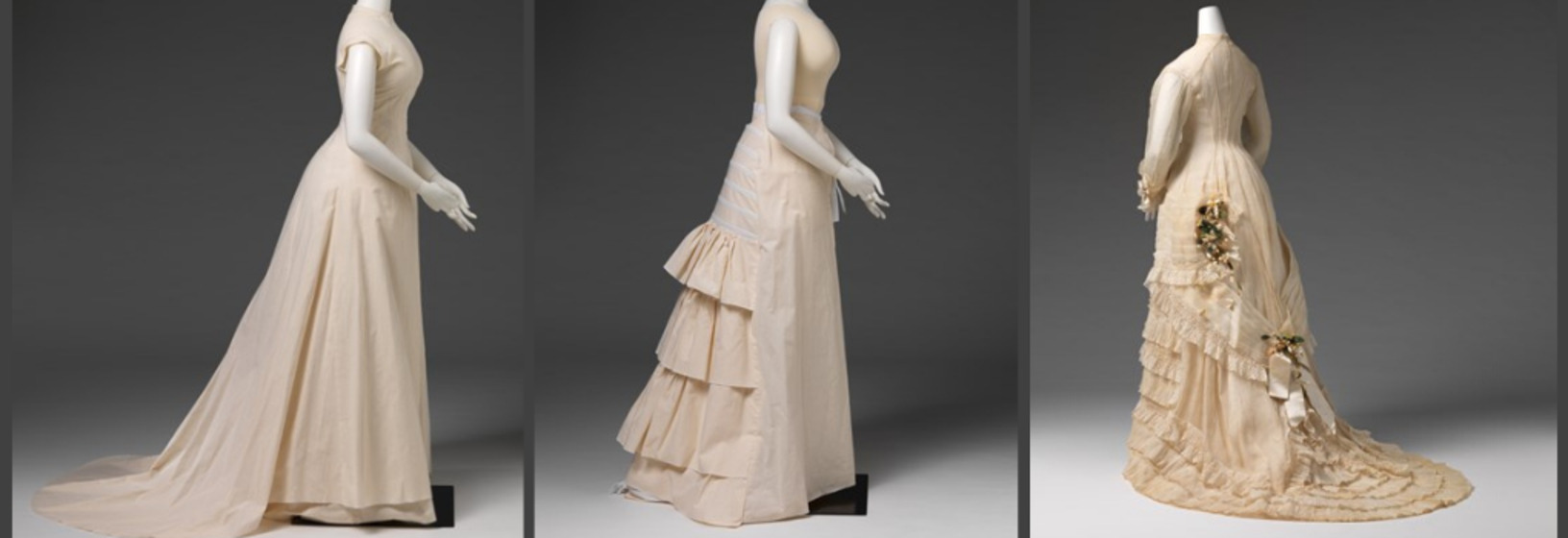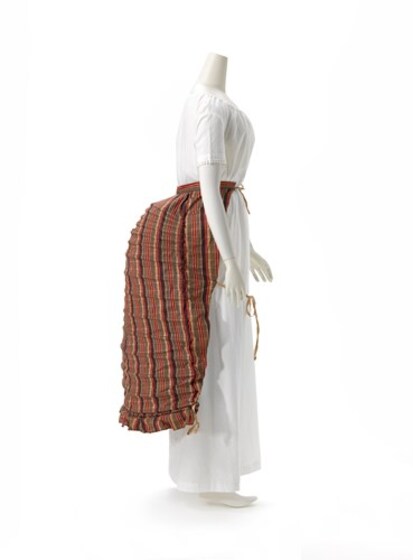Getting it Right
There is a great deal of effort that goes into preparing a museum garment for display which the public never sees. This is especially true for historical items.
Most obviously, there is the core work that our textile conservators do examining and treating works so that they are safe to exhibit. Equally vital is the task of creating the appropriate underpinnings and padded supports which ensure a garment has a historically accurate silhouette, and that the fragile fabrics are supported during display.
During the nineteenth century a lot went on beneath women’s gowns. Victorian fashion relied on a variety of contrivances to generate form; corsets compressed the waist, petticoats, crinolines and later cage-crinolines made skirts wider and fuller, while bustles produced a cantilevered behind. Working in tandem with the garment, these structures performed both functional and aesthetic roles.








